Stainless steel heat exchanger tube is generally used for boiler, heat exchanger, and condenser, standards are A249 welded tube and A213 seamless tube, 304 / 304L, 316 / 316L, 310S, 2205, S31803 stainless steel grades, annealing pickling or bright annealing condition.
Stainless steel tube has high temperate resistance and corrosion resistance, are used for heat transfer processes and are mostly applied in heating, cooling, condensation and evaporation of liquids, gases and steam. We offer a range of alloys that deliver high strength, thermal conductivity, and corrosion-resistant properties to ensure optimum performance in extreme conditions.
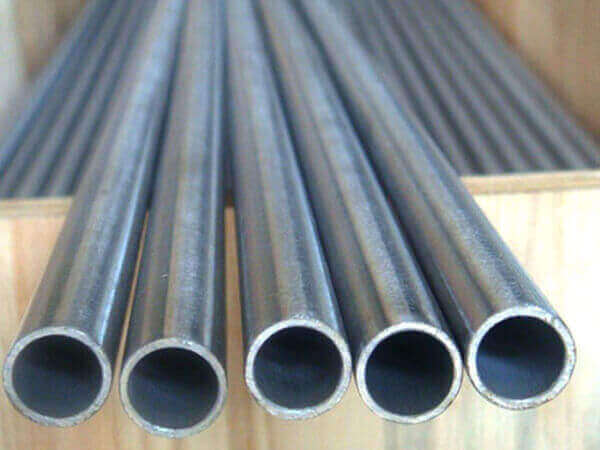
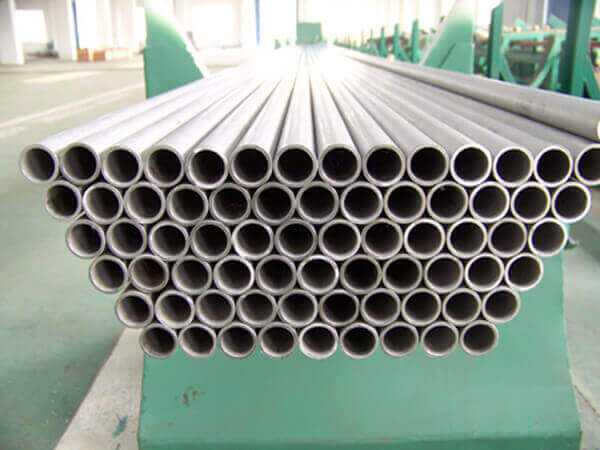
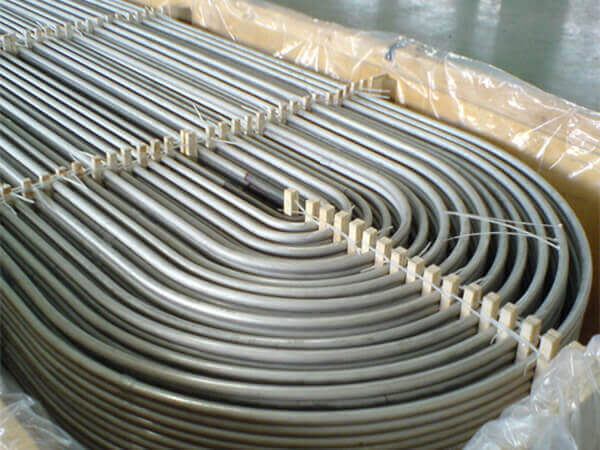
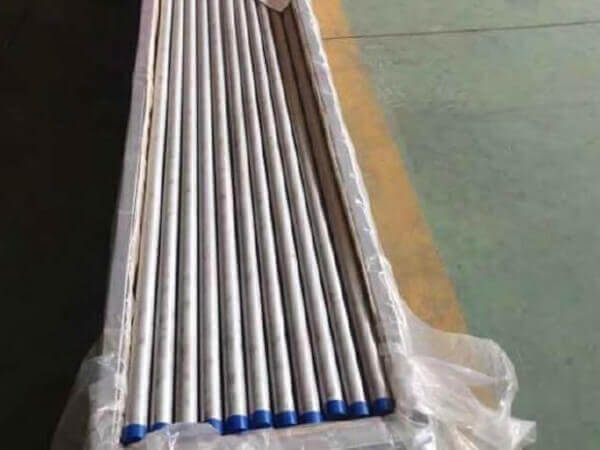
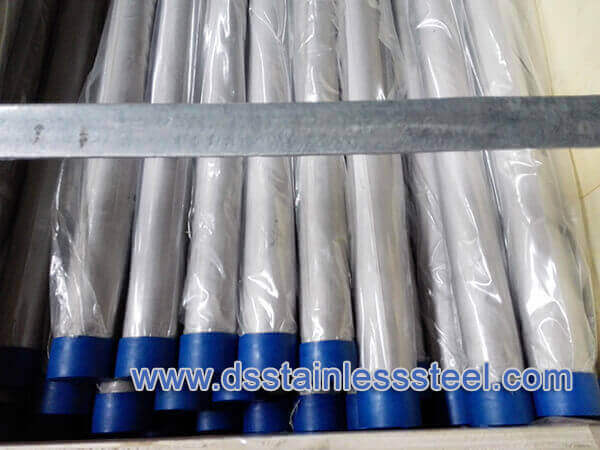
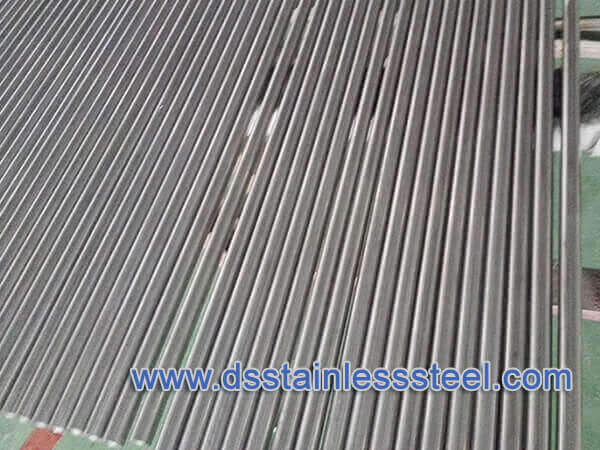
Stainless Steel Heat Exchanger Tube Specifications
| Welded | ASTM A249 ASTM A269 ASTM A789 |
|---|---|
| Seamless | ASTM A213 ASTM A269 ASTM A789 |
| Grades | TP304 / 304L, TP316 / TP316L, TP321 / TP321H, 2205 / S31803, TP310S. |
| Surface | Annealing Pickling Bright Annealing |
| Outside Diameter | 6.53 Mm – 127 Mm |
| Thickness | 0.5 Mm – 5 Mm |
| Tolerance | +/-0.05 Mm |
| Application | Heat Exchanger, Boiler, Condenser, Cooling, Heating |
Welded Stainless Steel Tube For Heat Exchanger
Welded stainless steel tube is used in heat exchanger system, annealing pickling or bright annealing finishes are available, tube welding bead should removed and grinding inside and outside to ensure a smooth surface, it is easy to clean inside heat exchanger, DONGSHANG Stainless is a welded stainless steel tube suppliers which can offer U bend tube and coil tube for various types of heat exchanger.
| ASTM | ASME |
|---|---|
| A-789 | SA-789 |
| B-163 | SB-163 |
| A-249, A-269 | SA-249 |
Seamless Stainless Steel Tube For Heat Exchanger
Seamless stainless steel heat exchanger tube, covering kinds of stainless steel grades to meet various requirements, minimum wall thickness or average wall thickness as agreed, cold drawn and cold rolled finishing, control tolerance of outside diameter, wall thickness and length, testing and inspection as standard should be carried out to make high-quality heat exchanger tubes.
| ASTM | ASME | EN |
|---|---|---|
| A-789 | SA-789 | 10216-5 |
| B-163 B-407 | SB-163 SB-407 | 10216-5 |
| B-668 | SB-668 | 10216-5 |
| A-269 | SB-677 | 10216-5 |
| A-213 A-269 | SA-213 | 10216-5 |
Heat Exchanger Tube Materials
Austenitic Stainless Steels
| UNS | ASTM | EN Steel No. | W.-Nr |
|---|---|---|---|
| S30403/S30400 | 304L/304 | 1.4306/1.4301 | 1.4306/1.4301 |
| S31603/S31600 | 316L/316 | 1.4435/1.4436 | 1.4435/1.4436 |
| S31635 | 316Ti | 1.4571 | 1.4571 |
| S32100/S32109 | 321/321H | 1.4541/1.4940 | 1.4541/1.4878 |
Duplex Stainless Steels
| UNS | ASTM | EN No. | W.-Nr |
|---|---|---|---|
| S31500 | – | 1.4424 | 1.4417 |
| S31803/S32205 | – | 1.4462 | – |
| S32304 | – | 1.4362 | 1.4362 |
| S32707 | – | – | – |
| S32750 | – | 1.4410 | – |
High-Alloy Austenitic Stainless Steels And Nickel Alloys
| UNS | ASTM | EN Steel No. | W.-Nr |
|---|---|---|---|
| N06600 | Alloy 600 | – | 2.4816 |
| N06690 | Alloy 690 | 2.4642 | 2.4642 |
| N06625 | Alloy 625 | – | – |
| N08825 | Alloy 825 | – | 2.4858 |
| N08800 | – | 1.4558 | 1.4558 |
| N08028 | – | 1.4563 | 1.4563 |
| N08904 | – | 1.4539 | 1.4539 |
| S31254 | 254SMO | 1.4547 | (1.4529)** |
Heat Exchanger Applications
Heat exchanger is a device used to transfer heat between a solid object and a fluid, or between two or more fluids at different temperatures, transfer heating from higher temperature fluid to lower temperature object to make fluid temperature to specified requirement, for stainless steel grades, there are shell and tube heat exchanger, plate heat exchangers, plate and shell heat exchanger and other heat exchanger, tube heat exchanger consists of a number of tubes inside bundle and sheet, widely used in many industries.
- space heating
- refrigeration
- air conditioning
- power stations
- chemical plants
- petrochemical plants
- petroleum refineries
- natural-gas processing
- wine and beer making
Standard Stainless Steel Heat Exchanger Tube Sizes
| OD/WT (Mm) | 0.5 | 0.6 | 0.7 | 0.8 | 0.9 | 1.0 | 1.2 | 1.5 | 1.65 | 2.0 | 2.11 | 2.5 | 3.0 |
|---|---|---|---|---|---|---|---|---|---|---|---|---|---|
| 12.7 | • | • | • | • | • | • | • | ||||||
| 14 | • | • | • | • | • | • | • | • | • | ||||
| 15 | • | • | • | • | • | • | • | • | • | ||||
| 16 | • | • | • | • | • | • | • | • | • | ||||
| 19.1 | • | • | • | • | • | • | • | • | • | • | • | ||
| 20 | • | • | • | • | • | • | • | • | • | • | • | ||
| 22 | • | • | • | • | • | • | • | • | • | • | • | ||
| 23 | • | • | • | • | • | • | • | • | • | • | • | ||
| 25.4 | • | • | • | • | • | • | • | • | • | • | • | • | |
| 28 | • | • | • | • | • | • | • | • | • | • | • | • | |
| 30 | • | • | • | • | • | • | • | • | • | • | • | • | |
| 31.8 | • | • | • | • | • | • | • | • | • | • | • | • | |
| 34 | • | • | • | • | • | • | • | • | • | • | • | • | |
| 35 | • | • | • | • | • | • | • | • | • | • | • | ||
| 38.1 | • | • | • | • | • | • | • | • | • | • | • | ||
| 40 | • | • | • | • | • | • | • | • | • | • | |||
| 42.2 | • | • | • | • | • | • | • | • | • | • | |||
| 44.5 | • | • | • | • | • | • | • | • | • | • | |||
| 50.8 | • | • | • | • | • | • | • | • | • | ||||
| 60.3 | • | • | • | • | • | • | • | • | |||||
| 63.5 | • | • | • | • | • | • | • | • | |||||
| 76.2 | • | • | • | • | • | • | • | ||||||
| 88.9 | • | • | • | • | • | • | • | ||||||
| 101.6 | • | • | • | • | • | • | • |
Heat Exchanger Tube Manufacturer
We manufacture and supply heat exchanger tubes in sizes ranging from 6 mm to 76 mm OD. All standard outside diameters and wall thickness for heat exchanger tubing are covered with maximum lengths of 30 meters. Tubes can be supplied in straight or U-bends. Special sizes can be made on request.
Dongshang holds extensive equipment such as extrusion presses, Pilger machines, straightening machines, degreasing facilities, solution & bright annealing furnaces, stabilization furnaces and drawing equipment.
The Manufacturing methods employed at the mill’s main production units reflect the most advanced technologies. Production of seamless and welded stainless steel tubes is carried out according to all common international delivery and tolerance standards.
Heat Exchanger Tube Standard Specifications
- ASTM A 213- Standard specification for seamless, ferritic and austenitic alloy-steel boiler, superheater and heat exchanger tubes.
- ASTM A789- Standard specification for seamless, duplex stainless steel heat exchanger tubing.
- ASTM B161- Nickel seamless pipes and tubes.
- ASTM B163- specification for seamless nickel and nickel alloy condenser and heat exchanger tubing.
- ASTM B167-Nickel-Chromium-Iron alloys and Nickel-Chromium Cobalt-Molybdenum alloy pipes and tubes.
- ASTM B668-standard specification for UNS08028 seamless pipes and tubes.
- EN 10216-5 TC-1 & TC 2, DIN Standards.
Grades Available
Heat exchanger tubes are available in a variety of metals including steel, copper, brass, 70-30 copper-nickel, aluminum bronze, aluminum, and stainless steel, stainless steel grades are available as follows:
- 304/304L – 1.4301/1.4307
- 316/316L – 1.4401/1.4404
- 316Ti – 1.4571
- 321/321H – 1.4541 -1.4878
- 347/347H – 1.4550
- 310/S/H -1.4845
- 253 MA – UNS S30815 – 1.4835
- UNS S31803/UNS S2205 -1.4462
- UNS S32750 – 1.4410
- UNS S32760 – 1.4501
- 6Mo – 1.4547 – UNS S31254
- 904L – 1.4539
- ALLOY 825 – 2.4858
- ALLOY 20 – 2.4660
OTHER GRADES AVAILABLE UPON REQUEST
Standard And Additional Tests In House
- NACE MR0175 – NACE MR 0103 – EN ISO 15156
- Intergranular corrosion, ISO 3651-2 METHOD A – ASTM A262 PRACTICE E – MIL P24691/3
- 100% PMI tested
- Material hydraulically tested according to A999 par22.2
- Cold-finished material eddy current tested according to E426
- Mechanical (Tensile/Hardness/Flattening/Flaring/Bend), Chemical analysis,
Heat Exchanger Tube Sizes
Heat exchanger tubes are obtainable in several wall thicknesses defined by the Birmingham Wire Gauge (B.W.G.), which is usually referred to as the B.W.G. or gauge of the tube. The outside diameter of heat-exchanger tubes is the actual outside diameter within a very strict tolerance.
For the corresponding Tube OD and material, select the B.W.G (Birmingham Wire Gauge) number. For Example, if you select the tube material as carbon steel and tube OD as 1 inch then the B.W.G number will be either 14 or 12. Tube diameters in the range 1/4 in. (6.35 mm) to 2 in. (50 mm) are used. The smaller diameters 5/8 to 1 in. (16 to 25 mm) are preferred for most duties, as they will be more compact resulting in cost economy (cheaper exchangers). Larger tubes are easier to clean by mechanical methods and would be selected for heavily fouling fluids. The tube thickness (gauge) is selected to withstand the internal pressure and give an adequate corrosion allowance, the most commonly used tube diameters are ¾ inch and 1 inch.
After choosing the tube diameter and the tube thickness, we must choose the tube length according to TEMA standards. While choosing we must consider the availability of the space with the client. If nothing is specified about the length of the tube by the client then choose the tube length according to TEMA standards. For a given surface area, the use of longer tubes will reduce the shell diameter, which will generally result in a lower-cost exchanger, particularly for high shell pressures.
U Bend Stainless Steel Tubes are manufactured for heat exchangers commonly according to ASTM/ASME A688 standard, after U bend (cold forming), heat treatment of the bending portion may be required.
Heat Exchanger
The heat exchanger is a specialized device that assists in the transfer of heat from one fluid to the other. In some cases, a solid wall may separate the fluids and prevent them from mixing. In other designs, the fluids may be in direct contact with each other. In the most efficient heat exchangers, the surface area of the wall between the fluids is maximized while simultaneously minimizing the fluid flow resistance. Fins or corrugations are sometimes used with the wall in order to increase the surface area and induce turbulence.
Heat exchangers are widely used in space heating, refrigeration, air conditioning, power stations, chemical plants, petrochemical plants, petroleum refineries, natural gas processing, and sewage treatment.
Flow Arrangements
There are three primary flow arrangements with heat exchangers: counter-flow, parallel-flow, and cross-flow. In the counter-flow exchanger, the fluids enter the exchanger from opposite sides. This is the most efficient design because it transfers the greatest amount of heat. In the parallel-flow version, the fluids come in from the same end and move parallel to each other as they flow to the other side. The cross-flow heat exchanger perpendicularly moves the fluids.
Heat Exchanger Types
There are four different types of heat exchangers: shell and tube heat exchangers, double-tube heat exchangers, tube-in-tube heat exchangers and plate heat exchangers.
Shell and tube heat exchanger is the most typical type of design. This has multiple finned tubes. One of the fluids runs through the tubes while the other fluid runs over them, causing it to be heated or cooled. A shell and tube exchanger consists of a number of tubes mounted inside a cylindrical shell. Two fluids can exchange heat, one fluid flows over the outside of the tubes while the second fluid flows through the tubes. The fluids can be single or two-phase and can flow in a parallel or a cross/counter flow arrangement.
Double tube heat exchangers employ the simplest heat exchanger design and configuration which consists of two or more concentric, cylindrical pipes or tubes, there are two pipes where one is built inside the other, a smaller tube within a larger tube structure. One fluid flows through the inner pipe while the second fluid flows around the first fluid in the outer pipe. This type of heat exchanger is known for being the most basic and affordable of all. Its size makes it ideal for tight spaces, allowing for some extra flexibility in the layout of the manufacturing process.
Tube in tube heat exchanger is comprised of two tubes, one for each fluid. However, the tubes are coiled together to form an outside and inside pattern. The application for a tube-in-tube design can get fairly creative. Since the tubes are coiled together, most designs for this type are compact. Applications for a tube-in-tube heat exchanger center around high temperature and high pressure. Since it runs at a higher output, a tube-in-tube heat exchanger tends to have greater efficiency.
Plate heat exchangers are constructed of several thin, corrugated plates bundled together, the fluid flows through baffles. This causes the fluids to be separated by plates with a large surface area. This type of exchanger is typically more efficient than the shell and tube design.
Some variations of type include pillow plate heat exchangers, plate and frame, plate and shell, and spiral plate heat exchangers.
Industries and Applications of Heat Exchangers by Type
| Type Of Heat Exchanger | Common Industries And Applications |
|---|---|
| Shell and Tube | Oil refining Preheating Oil cooling Steam generation Boiler blowdown heat recovery Vapor recovery systems Industrial paint systems |
| Double Tube | Industrial cooling processes Small heat transfer area requirements |
| Plate | Cryogenic Food processing Chemical processing Furnaces Closed loop to open loop water cooling |
| Condensers | Distillation and refinement processes Power plants Refrigeration HVAC Chemical processing |
| Evaporators/Boilers | Distillation and refinement processes Steam trains Refrigeration HVAC |
| Air Cooled/Fan Cooled | Limited access to cooling water Chemical plants and refineries Engines Power plants |
| Adiabatic Wheel | Chemical and petrochemical processing Petroleum refineries Food processing and pasteurization Power generation Cryogenics HVAC Aerospace |
| Compact | Limited space requirements (e.g., aircrafts and automobiles) Oil cooling Automotive Cryogenics Electronics cooling |
